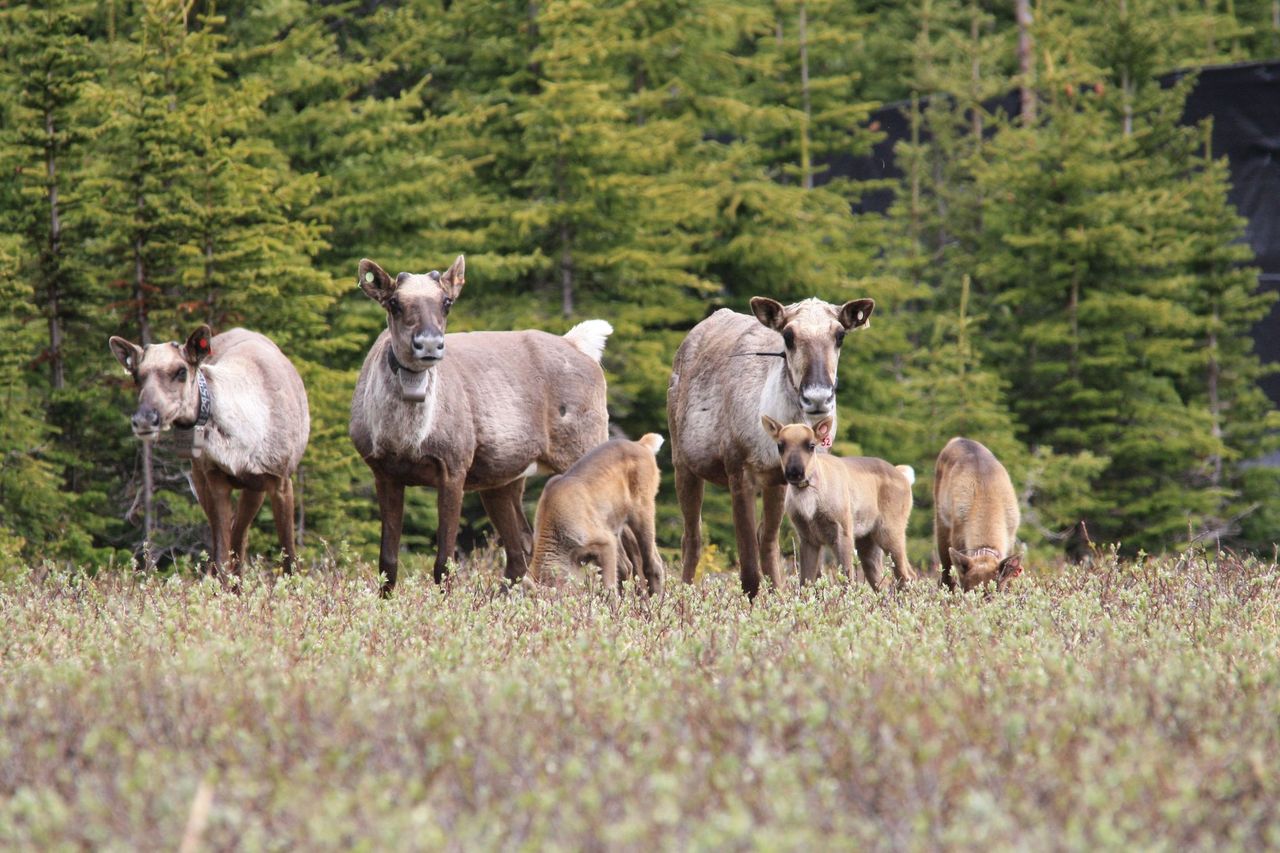APRIL 17, 2024—A new paper in the journal Ecological Applications examines whether recovery actions used to increase southern mountain caribou populations in western Canada have been effective. Researchers found that while caribou have declined dramatically over the past few decades, including the extirpation of many caribou populations, there are roughly 50% or 1,500 more caribou on the landscape than if no recovery actions had been taken.
Southern mountain caribou are the most imperiled of all woodland caribou. Over the last two decades, multiple southern mountain caribou populations have been extirpated and most that remain are small (<100 individuals) and rapidly declining. The ultimate cause of caribou decline is human-caused habitat loss and degradation, in turn leading to increased predation. As it can take decades to restore enough habitat for populations to recover, five types of recovery actions have been employed to avoid near-term caribou extirpation: maternal penning, supplemental feeding, translocation, reducing predator density, and reducing the density of alternate prey (e.g., moose).
“Caribou declines have been drastic and the measures required to keep populations from completely disappearing are critical, but also contentious”, says lead author Dr. Clayton Lamb, a postdoctoral fellow at the University of British Columbia and Wildlife Scientist at Biodiversity Pathways. Lamb notes, “Our task was to assess whether and how these actions helped southern mountain caribou.”
Over thirty researchers from across British Columbia and Alberta came together to pool and analyze over fifty years of data on southern mountain caribou, using sources such as population estimates from aerial surveys and information on caribou mortality from collared animals. Data collection began for most populations after 1991, though the earliest data comes from 1973. The team found southern mountain caribou abundance declined by 51% between 1991-2023, but without recovery actions, the decline would have been even greater.
There is strong evidence that predator reductions have increased caribou populations and avoided further caribou extirpation events. This increase was seen under current levels of climate change and high levels of habitat loss. Actions such as maternal penning and supplemental feeding were most effective when coupled with predator reduction. Other actions such as prey reduction, wolf sterilization, or translocations had a lesser impact.
While recovery actions have stabilized or increased caribou abundance, the number of southern mountain caribou will remain dangerously low for years to come, with considerable risk of further extirpation events. Habitat protection and restoration are essential for long-term caribou recovery, but we cannot immediately regrow the mature forests that are naturally low in predators that caribou need to survive. If resource managers wish to maintain caribou populations on the landscape in the meantime, evidence-based, short-term recovery actions such as those studied in this paper would need to be considered.
“We did this analysis with full understanding and agreement that habitat loss is the primary driver of caribou declines. But the reality is that habitat restoration, even once complete, will take decades to produce the mature forests and low predator densities caribou need to survive. In the meantime, we need evidence-based actions to sustain caribou,” says Lamb.
“It has been a pleasure to work with such a diverse team of academics, managers, and provincial and federal agency personnel to measure the effects of population management, and learn that we have 1,500 more caribou than we would have had without these actions”, says co-author Dr. Rob Serrouya, Co-Director of the Wildlife Science Centre with Biodiversity Pathways.
For more information and media requests, contact Dr. Clayton Lamb.
Read the full article here: https://esajournals.onlinelibrary.wiley.com/doi/full/10.1002/eap.2965
